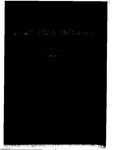Communicating the Unspeakable: Linguistic Phenomena in the Psychedelic Sphere
| dc.contributor.supervisor | Ascott, Roy | |
| dc.contributor.author | Slattery, Diana R. | |
| dc.contributor.other | Faculty of Arts, Humanities and Business | en_US |
| dc.date.accessioned | 2011-08-24T11:25:49Z | |
| dc.date.available | 2011-08-24T11:25:49Z | |
| dc.date.issued | 2011 | |
| dc.identifier | 300339 | en_US |
| dc.identifier.uri | http://hdl.handle.net/10026.1/549 | |
| dc.description.abstract |
Psychedelics can enable a broad and paradoxical spectrum of linguistic phenomena from the unspeakability of mystical experience to the eloquence of the songs of the shaman or curandera. Interior dialogues with the Other, whether framed as the voice of the Logos, an alien download, or communion with ancestors and spirits, are relatively common. Sentient visual languages are encountered, their forms unrelated to the representation of speech in natural language writing systems. This thesis constructs a theoretical model of linguistic phenomena encountered in the psychedelic sphere for the field of altered states of consciousness research (ASCR). The model is developed from a neurophenomenological perspective, especially the work of Francisco Varela, and Michael Winkelman’s work in shamanistic ASC, which in turn builds on the biogenetic structuralism of Charles Laughlin, John McManus, and Eugene d’Aquili. Neurophenomenology relates the physical and functional organization of the brain to the subjective reports of lived experience in altered states as mutually informative, without reducing consciousness to one or the other. Consciousness is seen as a dynamic multistate process of the recursive interaction of biology and culture, thereby navigating the traditional dichotomies of objective/subjective, body/mind, and inner/outer realities that problematically characterize much of the discourse in consciousness studies. The theoretical work of Renaissance scholar Stephen Farmer on the evolution of syncretic and correlative systems and their relation to neurobiological structures provides a further framework for the exegesis of the descriptions of linguistic phenomena in first-person texts of long-term psychedelic selfexploration. Since the classification of most psychedelics as Schedule I drugs, legal research came to a halt; self-experimentation as research did not. Scientists such as Timothy Leary and John Lilly became outlaw scientists, a social aspect of the “unspeakability” of these experiences. Academic ASCR has largely side-stepped examination of the extensive literature of psychedelic selfexploration. This thesis examines aspects of both form and content from these works, focusing on those that treat linguistic phenomena, and asking what these linguistic experiences can tell us about how the psychedelic landscape is constructed, how it can be navigated, interpreted, and communicated within its own experiential field, and communicated about to make the data accessible to inter-subjective comparison and validation. The methodological core of this practice-based research is a technoetic practice as defined by artist and theoretician Roy Ascott: the exploration of consciousness through interactive, artistic, and psychoactive technologies. The iterative process of psychedelic self-exploration and creation of interactive software defines my own technoetic practice and is the means by which I examine my states of consciousness employing the multidimensional visual language Glide. | en_US |
| dc.language.iso | en | en_US |
| dc.publisher | University of Plymouth | en_US |
| dc.subject | Language | en_US |
| dc.subject | Technoetics | en_US |
| dc.subject | Psychedelics | |
| dc.subject | Neurophenomenology | |
| dc.title | Communicating the Unspeakable: Linguistic Phenomena in the Psychedelic Sphere | en_US |
| dc.type | Thesis | |
| dc.identifier.doi | http://dx.doi.org/10.24382/4147 |
Files in this item
This item appears in the following Collection(s)
-
01 Research Theses Main Collection
Research Theses Main


